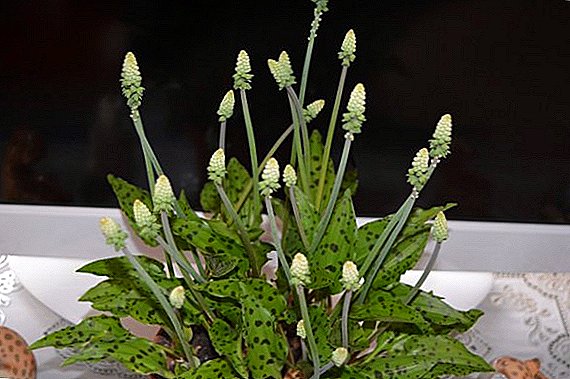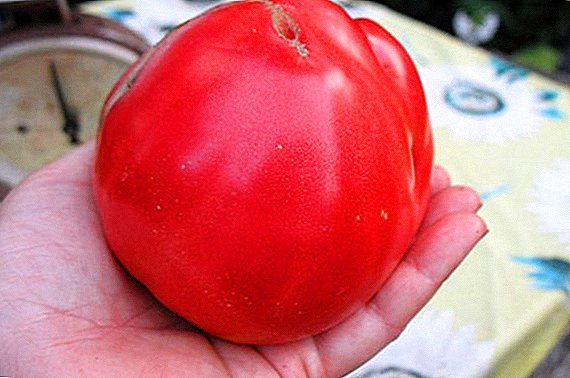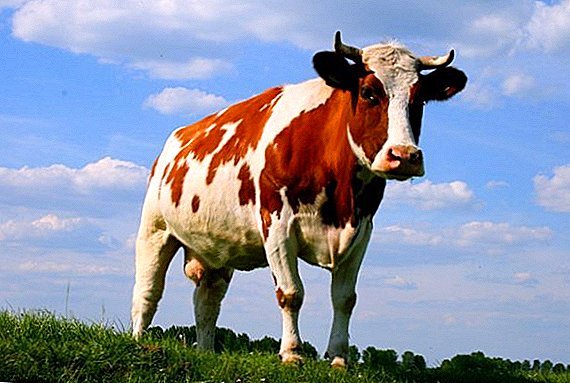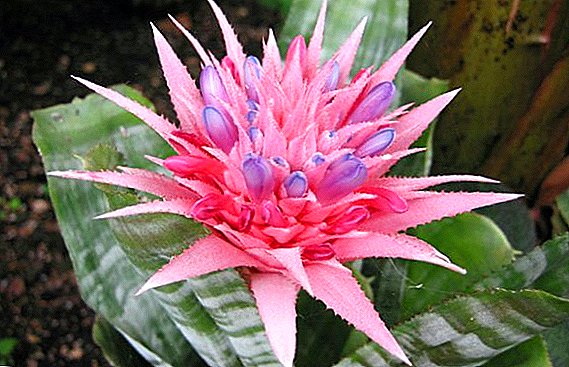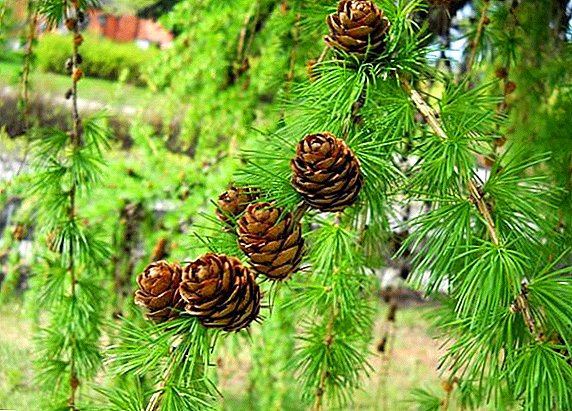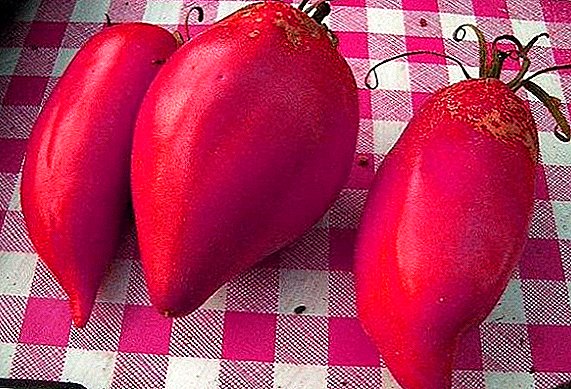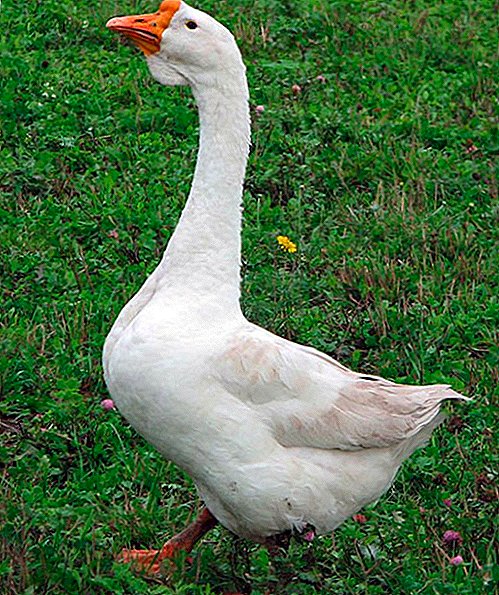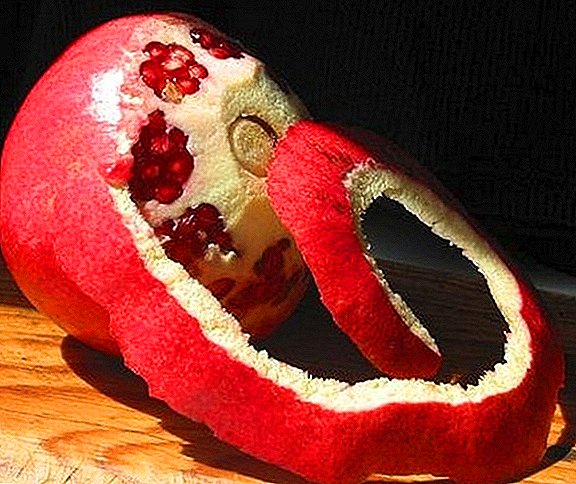 There are legends about the beneficial properties of a pomegranate. Many ethnic groups call it "paradise apple", and not only because it has an external resemblance to this fruit, but also due to the fact that its effect on the organism can really be called magical. Ever since the days of ancient civilizations, pomegranate has become a means for treating many diseases of the heart muscle, stomach, anemia, and also viral and bacterial ailments. However, not only pomegranate seeds have magical and healing properties. Their skin can also give a person a variety of usefulness, which we will discuss in our article.
There are legends about the beneficial properties of a pomegranate. Many ethnic groups call it "paradise apple", and not only because it has an external resemblance to this fruit, but also due to the fact that its effect on the organism can really be called magical. Ever since the days of ancient civilizations, pomegranate has become a means for treating many diseases of the heart muscle, stomach, anemia, and also viral and bacterial ailments. However, not only pomegranate seeds have magical and healing properties. Their skin can also give a person a variety of usefulness, which we will discuss in our article.
The composition of the pomegranate peel
All that useful that can be stored in the skin of pomegranate, depends largely on its mineral and vitamin composition, as well as indicators of nutritional value.
Read how to grow pomegranate from the stone at home.
So, for every 100 grams of pomegranate fruit accounts for:
- 0.7 grams of dietary fiber;
- 0.4 grams of saturated fatty acids;
- 0.5 grams of unsaturated fatty acids;
- 1.7 grams of organic acids;
- 15 grams of carbohydrates;
- 0.4 grams of fat;
- 0.8 grams of protein;
- 7 grams of glucose;
- 6.5 grams of fructose;
- 6.6 grams of water;
- 0.4 grams of ash.
 But this is not a complete list of useful components contained in pomegranate crusts. It can include macro and microelements in its list, the content of which in 100 grams of the product is distributed as follows:
But this is not a complete list of useful components contained in pomegranate crusts. It can include macro and microelements in its list, the content of which in 100 grams of the product is distributed as follows:- 145 milligrams of potassium;
- 3 milligrams of magnesium;
- 4 milligrams of sodium;
- 4 milligrams of iodine;
- 9 milligrams of calcium;
- 7 milligrams of phosphorus;
- 0.13 milligrams of aluminum;
- 56.7 micrograms of boron;
- 3.4 micrograms of cobalt;
- 0.2 milligram of iron;
- 13.5 micrograms of vanadium;
- 156 micrograms of copper;
- 0.21 milligrams of manganese;
- 395 micrograms of zinc.
Did you know? The fruits of the pomegranate tree have long been considered amazing and even magical gifts of nature. Different cultures have discovered many healing properties of their grains and crusts. It is no coincidence that this “paradise fruit” is mentioned in the most ancient writings, such as “Exodus”, “Quran”, “Babylon Texts” and “Homer's Hymns”.
Such an impressive part of the periodic table is in the crusts of pomegranate fruits. True, this does not end the track record of beneficial elements, because even in a pomegranate there are a couple of dozen vitamins and amino acids, most of which are vital for the body’s activities: for example, folic acid, which takes 38 micrograms of garnet peel in 100 grams. The remaining vitamins were distributed as follows:
- 3 mcg beta carotene;
- 0.6 mg of vitamin E;
- 0.29 mg of vitamin PP;
- 5 mcg of vitamin A;
- 16.4 mcg of vitamin K;
- 0.62 mg is taken by the B group vitamins (which include valuable folic acid);
- 7.6 mg choline.
 And the pomegranate peel contains an impressive amount of essential amino acids for our body, which include:
And the pomegranate peel contains an impressive amount of essential amino acids for our body, which include:- valine;
- phenylalanine;
- histidine;
- threonine;
- leucine;
- methionine;
- lysine.
Find out what the beneficial properties of the juice from this fruit.
If we talk about the caloric content of such a product, then every 100 grams of pomegranate peel hide an average of 72-83 kcal.
The beneficial properties of the peel
Pomegranate and its derivatives began to be used by healers and healers during the time of Hippocrates. From ancient years, this fruit came into use as not only delicious berries, but also a healing agent.
In the modern world, the possibility of therapeutic effects of pomegranate crusts on our body has been recognized both by traditional healers and official representatives of medicine and pharmaceuticals.
Together with their derivatives, pomegranates are widely used to create medicines for a variety of ailments.  The main spectrum of action of such drugs is reduced to the following points:
The main spectrum of action of such drugs is reduced to the following points:
- used as an antioxidant, help cleanse the body of unnecessary substances, cleanse and enrich the blood, strengthen the walls of blood vessels, maintain normal functioning of the heart muscle and the entire circulatory system;
- have an astringent effect, and therefore are often used in the treatment of abundant diarrhea, indigestion, dysbiosis and other ailments affecting the gastrointestinal tract;
- used as an anti-inflammatory agent to combat respiratory and lung diseases;
- characterized by antibacterial and antiviral qualities that help with a number of diseases, which we will discuss later.
Did you know? In order to heal the wounded soldiers of ancient Greece, healers used infusions on pomegranate crusts to quickly eliminate unhealed and festering wounds, relieve burns, and cure ulcers. In addition, if you take this infusion inside, you can get rid of dysentery.
Thus, the infusion based on pomegranate peel has anti-burn, wound-healing and disinfecting properties. And this product is a great way to fortify the body, prevent a variety of diseases and fight against worms.
What can be cured
In view of the beneficial qualities of the peel listed in the previous paragraph, we can draw conclusions regarding those diseases and ailments that can be cured with its help.  They can be combined into the following categories:
They can be combined into the following categories:
- respiratory tract: bronchitis, asthma attacks, pneumonia, tracheitis, acute respiratory inflammation, runny nose, colds and even tuberculosis;
- heart and circulatory system: thrombosis, tachycardia, anemia, ischemia, as well as heart attacks and strokes (including as a prophylaxis of these conditions);
Also a positive effect on the state of the cardiovascular system have: hellebore, chervil, radish, cumin, zyuznik and honeysuckle.
- gastrointestinal tract: inflammation, ulcers, gastritis, dysentery, dysbiosis, profuse diarrhea, chronic liquid stools and others;
- other: vitaminization, dihelminthization, intoxication, fight against burns and boils, general tonization, antidepressant effect, etc.
Preparation of raw materials
Preparation of raw materials for future medicinal drugs should be dealt with according to the following instructions:
- Ripe pomegranates are thoroughly cleaned under running water and dried with a paper towel.
- Next, you need to clean the whole zest of pomegranate with a knife, then choose the grains and throw away the white streaks, as they are of no use.
- The next stage of the workpiece will be cutting the rind into straws, rubbing on a grater to obtain small rind, grinding on a coffee grinder to obtain a powdery substance. The method of preparation depends on the needs and on the recipes in which it will be applied. You can cook several types of pomegranate peels.
- After that, the obtained substance should be scattered on parchment paper and left at room temperature for several days for natural drying. You can speed up this process using the oven. To dry the grenades should be at a low temperature within + 50 ... + 70 ° C. It is better if the door is ajar so that excess moisture evaporates faster.
- Next, the resulting components should be scattered in glass containers (as in the glass garnet peels will be stored longer) and sealed. Banks can be replaced with plastic bags with sealed clasps.
 Guided by these rules, you can easily prepare a healing tool to be ready for any situation.
Guided by these rules, you can easily prepare a healing tool to be ready for any situation.Recipes of traditional medicine
Since ancient times, traditional medicine could boast of many variations in the use of pomegranate fruits and their processed products as an effective medicine for many ailments. Below are some recipes that will help to cope with a particular disease.
Decoction for diarrhea and gastrointestinal disorders
For diarrhea, disorders of the digestive system and gastric intoxication, it is recommended to use a decoction based on 5 g of dried pomegranate crusts filled with 100 ml of boiling water and infused for a few hours before the cooled state can be safely drunk.
Such an infusion is taken three times a day for adults, twice a day for adolescents over 12 years old, and for children younger than this age, one time use of this drink will suffice.
Important! In order not to cause an overdose of infusion in children, it is better to divide this mixture into several methods, for example, brew 1.5-2 g of dried peel in 30-40 ml of boiling water. This option will be more acceptable for small organisms.
Medicine from pomegranate peels for worms
To eliminate worms and other harmful microorganisms, you can use a decoction based on a tablespoon of dried pomegranate peels, filled with a glass (200-250 ml) of boiling water.
This mixture should also be infused to an acceptable temperature and taken three times a day for the treatment of adults, twice for adolescents and once for children under 12 years of age. 
Burns
To remove burns, you can brew 5 g of pomegranate crusts in 100 ml of boiling water, insist for about half an hour, then wet cotton sponges in this liquid and wipe the areas affected by burns. This procedure can be performed from three to five times a day. Due to external use, such a mixture is not dangerous for the human body, therefore there are no dosages for different ages.
Universal recipe
Basically, in the medical practice of folk healers, the classic infusion of pomegranate peel is used in a proportion of 5 g per 100 ml of boiling water. Such a composition has the most effective concentration of beneficial substances that will help and not cause harm.
Important! Whatever disease or illness you try to cure with the help of folk remedies, you should be very careful and cautious, especially with children. Any overdose or non-compliance with the proportions can have a very negative impact on the fragile children's organism.
It is better to use such folk recipes as a supplement to the main treatment and only after prior consultation with your doctor, because the principle "Do no harm!" was invented for a reason.
Pomegranate peels and cosmetology
In addition to folk medicinal infusions and decoctions, pomegranate peel has found its successful application in the field of cosmetology. Particularly effective are the face mask and decoction for oily scalp and oily hair, whose properties we will discuss later.
Mask for the face
An effective and nourishing face mask prepared on the basis of pomegranate peel can be combined with various oils or milk. With it, you can quite easily cope with acne, acne, redness of the skin and even wrinkles.
In addition, this mask will help to moisturize the skin and will have a lifting effect, pulling up flabby places. A universal way to make this cosmetic is to add a few grams of pomegranate skins ground on a coffee grinder to your everyday cream. 
Broth for oily scalp
Pomegranate peel is rich in active microelements, which are an excellent way to balance the composition and improve the condition of the scalp and hair. In particular, they can effectively deal with their excessive fat content through regular use of a decoction based on 50 g of dry red pomegranate crusts, brewed in 1 liter of water.
We advise you to read how cosmetology uses: spirulina, bee pollen, fenugreek, Chinese pear, persimmon, macadamia nut, gravel, feijoa and viburnum.
This infusion is aged overnight, then filtered. This decoction should be washed hair and scalp whenever you wash. The course of treatment may vary depending on the degree of fat, but on average is about two months with the regularity of washing the head 1 time per week. 
Contraindications
In addition to the fact that the pomegranate fruit itself has a number of contraindications, its skin can also cause harm to the body. The thing is that it contains substances that are poisonous to the human body, called alkaloids, also contains pelletierin and isopelletierin.
These components are equally harmful to us and can lead to intoxication of the body, and the consequences of this problem are often headaches and dizziness, nausea and vomiting, blurred vision and darkening in the eyes, convulsions and even loss of consciousness. At the first symptoms should immediately consult a doctor, and it is better to call an ambulance.
In addition to the need to always be careful with infusions of pomegranate crusts, you should also be aware of cases when their use is contraindicated, especially when:
- constipation;
- anal fissures;
- hemorrhoids;
- hepatitis;
- jade
 Pomegranate is included in the number of those fruits that are considered the most useful gifts of nature for the human body, because besides the immediate benefits of the pomegranate fruit, the skin of this fruit has similar positive properties.
Pomegranate is included in the number of those fruits that are considered the most useful gifts of nature for the human body, because besides the immediate benefits of the pomegranate fruit, the skin of this fruit has similar positive properties.There are also no less useful fruits such as sweets, pomelo, bail, rambutan, bananas, oranges, papayas and lychees.
It contains an enormous list of beneficial microelements, vitamins, amino acids and minerals, most of which are vital for the full and stable functioning of the human body.
If you comply with all the prescribed rules and recommendations, you can safely use home medicinal and cosmetic products, including the peel of pomegranates, benefiting yourself and everyone around you.


